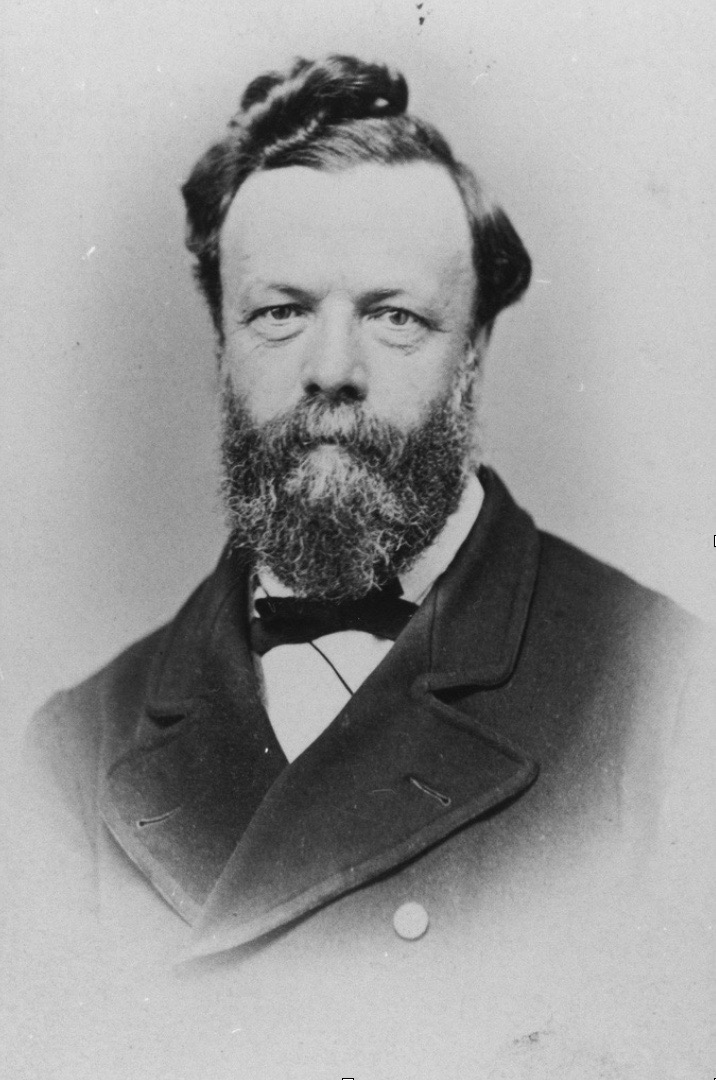

However good crops led many to ignore Goyder's advice and settlement occurred beyond Goyder's line, and for a few years there were even thoughts of farming the desert with a catch cry of "rainfall follows the plough"! Unfortunately Goyder's warnings were realised and poor return from many farms resulted in some lines being placed under threat of closure – even in the mid-1900s. In 1865 South Australia's Surveyor General, George Goyder, established a "Line of Rainfall", past which rainfall was not reliable enough to support cropping. To serve the mining and pastoral industries in the far north of the state, the Great Northern Railway was built from Port Augusta to Quorn in 1879, with the line reaching Marree in 1883, and Oodnadatta in 1891. Later, during the 1880s, efforts were made to centralise the system and eventually all lines, except for those on Eyre Peninsula, were linked to Adelaide. The early lines were short, disconnected lines built in the direction of the nearest port such as Port Broughton – Mundoora (horse drawn), Port Pirie – Crystal Brook and Port Wakefield – Balaklava.

The Kapunda line was then pushed through to Morgan to capture Murray River paddle steamer trade from up-stream. An extension, branching off at Roseworthy, was completed in 1870 to serve the mines at Burra. By 1860 a railway had been built to Kapunda where copper was first discovered in 1843 – and soon became the State's largest wheat receiving station. This was the first Government built and owned steam railway in the British Empire. Our State-owned railways began with the opening, on 19th April 1856, of the 12km broad gauge railway between Adelaide and Port Adelaide. The Formation of the South Australia Railways (SAR) Port Elliot soon proved unsuitable for shipping and the line was extended to Victor Harbor in 1864.

This was the first line to be laid with iron rails in Australia and was opened on the 18th of May 1854. The first line to be constructed in South Australia was a 10 kilometre broad gauge (1600 mm) horse drawn tramway between the Murray River port of Goolwa and Port Elliot.

Railways became an integral part of the State controlled occupation of new lands and expansion of mining, farming and pastoralism, the mainstays of our early economy. Governor Hindmarsh arrived in 1836 at a time when technological advances in agriculture and transport were to play a large role in the development of South Australia. His widely acclaimed and award-winning The Responsible Worker touts the advantages of workers as stakeholders within the organization of the company.South Australia is one of the youngest colonies in the nation, and the only one which resulted from extensive planning prior to settlement. and as the author of several books regarding his philosophy on how a company should be run. Goyder gained prominence as the chair of British International Paper Ltd. In addition to writing The Responsible Worker, Goyder also wrote The Responsible Company, The People’s Church, The Future of Private Enterprise, The Just Enterprise, and Signs of Grace (with his wife, Rosemary Bosanquet Goyder). He also served as director of Geographical magazine and was a founding trustee of the William Blake Trust. In 1947 George returned to British Paper International where he served as chair and managing director. In 1940 Goyder was called to serve his country as the general manager of the Newsprint Supply Company by procuring, rationing, and supplying paper for Britain’s wartime press. Goyder started his career at British Paper International. George Goyder was born on Jin London, England. George Goyder is an English businessman and author of several books regarding his philosophy on how a company should be run.


 0 kommentar(er)
0 kommentar(er)
